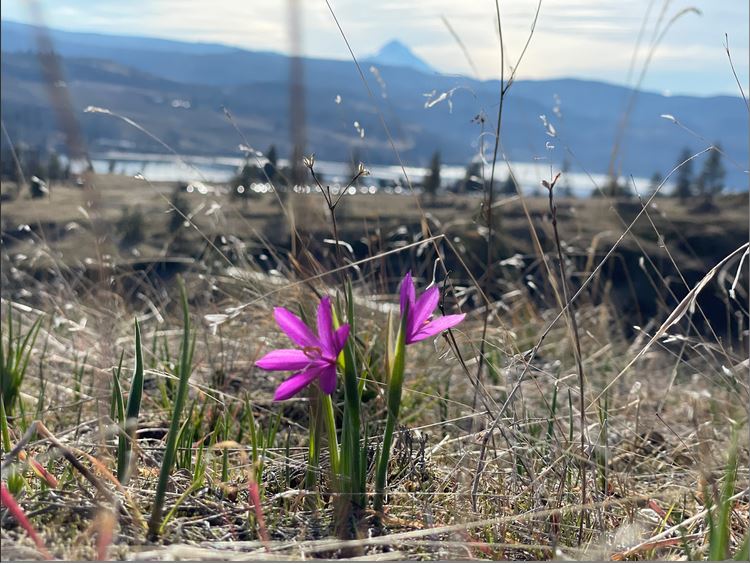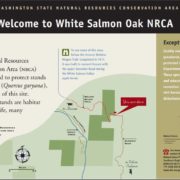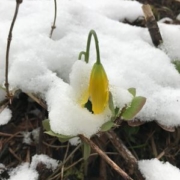Wildflowers Have Arrived
SIGNS OF SPRING
As soon as the snow melts, people delight in the discovery of the Douglas’ Grass Widow poking up all over the open, grassy areas and dry, windswept bluffs of the middle and eastern gorge. As soon as a few emerge, the hills will appear to be covered in a blanket of their unmistakable magenta hue. Their welcome burst of color, often as early as February, reminds us that spring is indeed coming.

Douglas’ Grass Widow (Olsynium douglasii) at Catherine’s Creek in Feb. Photo Credit: Aisha & Alexis Hill
WILDFLOWER I.D.
This member of the lily family usually displays two 6-petaled flowers atop a slender, curved stem with slender, linear leaves. They are typically 6-12 inches tall, and the flowers are about one inch wide. The bell-shaped flowers are typically purple to magenta in color but can occasionally be white!
The purple tepals are soft and silk-like and are often called Satin Flowers. They can also be called Douglas’ Blue-eyed or Douglas’ Purple-eyed grass. This is the only species of this genus in North America; all of the other 11 species are found in South America. The Douglas’ Grass Widow was first recorded in 1826 by Scottish botanist David Douglas, also famous for introducing the Douglas Fir into cultivation near Celilo Falls.
NAME STORY
In 19th-century colonial India, British wives typically lived spent the hot summers living in cooler parts of the country while their husbands worked in the lower, drier lands. Grass Widow wildflowers were named by early settlers who saw grass widows growing high up on the open hills and bluffs above the Columbia River and were reminded of the stories of the Grass Widows in India. When naming the flower, early settlers likely confused the stories of the women in colonial India with the Native American women (commonly referred to then as Indians) in the Columbia River Gorge.
Thank you to Ashley Erdely, author of Meet the Wildflowers, for this guest wildflower post!








